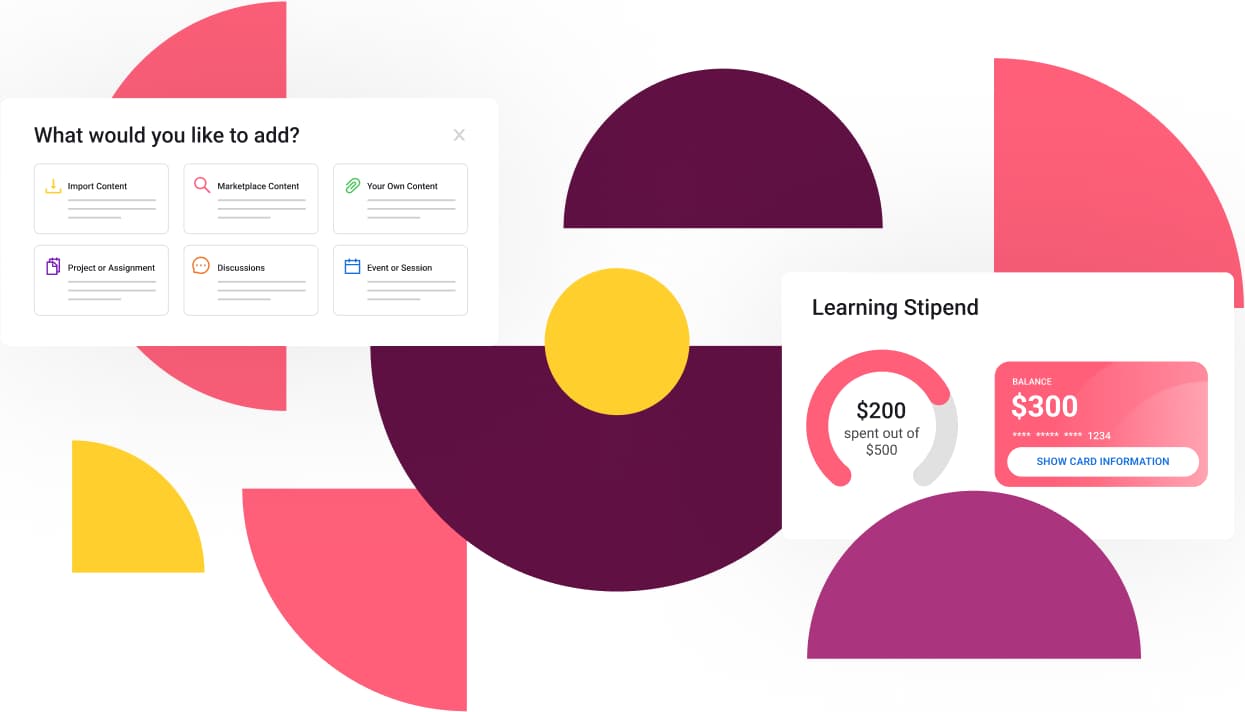Learning Investments for a Future Ready Workforce
Learning skills just-in-time does little to prepare your business for tomorrow’s skills.
At the beginning of 2021, Deloitte said 30 percent of U.S. employers said the skills gap, already considered an “emergency” by the World Economic Forum–was worse than in 2019. And Deloitte’s report found that 80 percent of employers said they couldn’t find employees with the skills they needed.
Fast-forward to today and, with 50 percent of employees quitting their jobs in the Great Resignation and millions still unemployed, employers still can’t find workers with the skills they need.
- More than 9.5 million Americans were unemployed and looking for work in June (Bureau of Labor Statistics)
- Job openings in the country reached a record 9.2 million
There are plenty of jobs and plenty of candidates among the unemployed and workers in transition. But employers can’t find qualified workers. What gives?
Acceleration of Skills Gap
Part of the problem is the “acceleration of the mismatch between the skills workers have and those that employers want,” said Art Bilger, CEO of skill-building nonprofit WorkingNation. “What was expected to happen over the next 10 to 20 years has, instead, happened in just a few months and there is evidence that the need for upskilling is stronger than ever.”
Piecemeal Approach to Learning and Development
U.S. businesses spend nearly $100 billion a year on learning and development (L&D). But L&D is not the same as skill-building for the future. According to the Harvard Business Review (HBR), businesses implement learning and development initiatives without a clear strategy and clear outcomes in mind, and as a result, the few employees that access the programs learn:
- The wrong things
- For the wrong reason
- At the wrong time
And they quickly forget what they’ve learned.
Learn the Right Things at the Right Time for the Right Reasons
Few businesses have implemented long-term, future-proofing skill-building initiatives because they haven’t seen it as urgent. Instead, programs roll out as needed to deliver today’s skills as efficiently as possible. So they put off tomorrow’s skills until tomorrow and end up perpetually behind.
To better understand approaches to L&D, let’s look at it in the context of the famous Eisenhower Decision-Making Matrix. The matrix is named for the former president and general who differentiated between urgent and important decisions. The matrix features four quadrants:
- Urgent and important (bottom right)
- Urgent but not important (top right)
- Important but not urgent (top left)
- Neither urgent or important (bottom left)
Let’s look at today’s L&D initiatives and how they align with the Eisenhower Matrix. This matrix substitutes quadrant names:
- Just in Time for Urgent
- Business Critical for Important
- Future Ready for Not Urgent
- Employee Discretion for Not Important
This matrix nicely clarifies the current L&D landscape.
- Performance Support: More targeted micro-learning solutions that deliver task-based training at the time of need as quickly as possible. Need to learn how to build a pivot table in Excel to complete a project? Just in Time and Business Critical. Done. The evidence of success comes when the project is completed
- Personalized Search: These L&D initiatives feature libraries of content that employees access on their own. Personalized Search is another way to offer Just in Time learning but leaves it up to employees to identify and find what they need. Both Just in Time quadrants represent the learning that HBR said is quickly forgotten, and there’s no way to document long-term skill retention.
- Curated Paths: Online journeys to learn a new skill as a discipline, not just to complete a task. These are a series of courses that have been curated in advance to achieve their outcomes. Want to become a data scientist? Help yourself. It can help an employee or workforce be Future Ready. Unfortunately, there is low uptake for these long-term programs as they require employees to be self-motivated to go the distance, and they have to take these journeys on their own time.
- Programs and Academies: Programs and Academies take a group approach to long-term skill-building. Instead of going it alone, employees learn together, on company time, with support and accountability. These programs take the best content from a variety of sources, or create custom curriculums, include internal subject matter experts, and include group learning and feedback sessions. If skills are business critical, we shouldn’t just hand people a library card and say good luck. Programs and Academies empower employees to be a part of a company’s initiatives to be Future Ready.
Bridging the Opportunity Gap
In addition to a skills gap, U.S. businesses face an opportunity gap. Traditional Programs and Academies have typically been made available only to high-performing employees already on leadership tracks in their departments.
“Instead of focusing on the skills gap, we argue that it’s time to focus on closing the opportunity gap—not only for the benefit of individuals who have been shut out of the labor market, but for society as a whole,” the Brookings Institute said. “Cultivating and investing in diverse talent can unleash regional innovation, economic growth, and community well-being.” People that already have access to “elite networks” are more likely to be included in advancement programs. Including underrepresented groups sends a strong message of inclusion that can impact retention in an era of dramatic change and transition.
Future Ready or Not
Learning skills Just in Time covers the work you need today but does little to prepare your business for the skills you’ll need tomorrow. Learning how to create a pivot table is not the same as training a new generation of managers. Building future readiness requires a long-term talent-development program that aligns with your business strategy. While it’s great that some employees will raise their hands to participate, long-term talent development shouldn’t be left to employee discretion alone. Ideally, Programs and Academies would be in the upper right quadrant–it is urgent and important. It is the ideal way to build capacity, just as you would invest in any other business technology with an eye on staying ahead of the change curve.
Written By:
TAYLOR BLAKE, CO-FOUNDER AND Chief PRODUCT OFFICER, Learn In

About Learn In
Learn In helps companies establish talent academies that steer all the resources needed for building an always-skilled workforce. HR, Talent and L&D leaders use Learn In to modernize access to learning budgets and world-class programs, and to simplify the delivery of custom programs to employee groups. Learn In’s core features include a tuition benefits manager, a prepaid learning stipend card, a world-class program marketplace and custom program builder, and dedicated coaching. Now every employee can build deeper skills precisely aligned to company needs. Co-founded by the founders of Degreed, Learn In is backed by leading edtech & future-of-work investors, including Firework Ventures, Kickstart Fund, GSV, Album, and Village Global, and has been covered in CNBC, USA Today, EdTechReview, EdSurge, and Techcrunch.
For more insights, follow us on LinkedIn, or subscribe to our newsletter to stay in touch.
